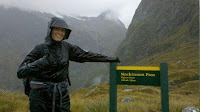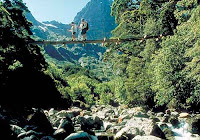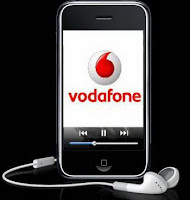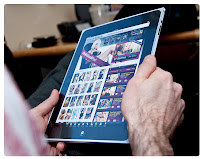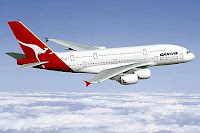Before we get going, just a quick reminder that
The Globe and Mail concludes its five-part excerpt series of
Sex, Bombs and Burgers today. Check out
part five.

As I promised yesterday, today I've done a bit of an advice column on how to write about science and technology (both for news media and for books). To be honest, I don't really like doing stuff like this, for a couple of reasons. Firstly, everyone has different reporting and writing techniques, so no one set of rules can apply. What works for one writer, or what another reporter is comfortable doing, just doesn't go for everyone, so you always have to take such advice with a grain of salt.
Secondly, one can always come off sounding like a pompous ass when dispensing advice, which is something I'm wary of. I've been doing this for a long time and have obviously learned a trick or two but I'm constantly learning new things all the time, so it could very well turn out that anything I say now may prove to be utterly wrong down the road.
Now that you've been suitably warned, I hope that some of what follows is of use to anyone thinking of getting into science and technology writing, or who may just be starting out. If any of this actually helps you get a job or a book deal, be advised that I accept royalty payments in the form of beer.
1. Reach out and schmooze someone
The most important thing to do if you're going to report and/or write about technology (or anything for that matter) is: get out and talk to people! There's only so much you can soak in while sitting in front of your computer, and only so much you can glean from talking to people on the phone. You only really develop meaningful relationships with people when you meet them face to face and get to know them (and vice versa).
An in-person interview is always preferable to a phoner because you can get in tune with the other person's body language and nuances. They can also physically demonstrate things to you, or make use of props and the like. When I visited Google last year, the company's Search Engine Optimization guru
Matt Cutts interrupted our conversation every five minutes to draw things on a nearby whiteboard, thereby greatly deepening my understanding of SEO and PageRank, which is something that just couldn't have happened on the phone.
Talking to people will also help you understand how things work and where they are going, and they're the ones who will (hopefully) feed you information down the road. They don't do that for strangers. In the world of science and technology, this means getting out to events or product launches and talking to the inventors, scientists, entrepreneurs and executives. Even if you don't write something about the specific product being launched, or whatever, you'll make a contact or two that you can call up for that story you're working on, and they won't treat you like a stranger. In the communications business, relationships are invaluable.
2. Don't be afraid to be an idiot
With that said, unless you have a PhD in several branches of science and engineering, you're more than likely to run up against things you don't know or understand. When the above-mentioned people are explaining it to you, one of the worst things you can do is nod your head and pretend to understand. If you don't understand what they're telling you, chances are good you'll either get something wrong or your readers won't understand either.
The solution is to take one for the team - don't be afraid to look like a complete moron. Scientists in particular are terrible at explaining things so that John Q. Idiot can understand, so you've got to be firm with them and ask them to explain things over and over again, and in as many different ways as possible, until you understand it. Fortunately, scientists and engineers are often pleasant people who are very generous with their time (they're usually just thrilled that someone outside a lab wants to talk to them).
I've felt
like an idiot pretty much every time I talk to Vint Cerf, the engineer (and Google vice-president) who often gets much of the credit for inventing the internet, yet he keeps taking my interview requests, so he's either an incredibly patient man or appreciative of my trying to understand things.
3. K.I.S.S. (Keep it simple, stupid, not the rock band)
One of the first things they taught us in journalism school was the KISS principle, and it doubly applies in tech and science writing. Technology is universal - it surrounds all of us and we all use it, so despite what you may hear elsewhere, everyone likes to read about it; it's all in how the story is presented to them. If you get overly technical and/or use jargon without explaining it, you'll end up excluding the vast majority of your potential audience. This doesn't mean you have to dumb things down, but it does mean you have to explain things and bend over backwards to make sure they're clear. A good rule of thumb is to write for your mom or your grandma - if they could read and appreciate your story, you've done your job.
This is perhaps the hardest part of tech writing: if you can take complex issues such as mobile termination rates or local loop unbundling* and get the average person to understand them, you'll go far. It really is the difference between writing for other techies and writing for a larger, broader audience. Also, it's okay to use jargon in your story so long as the specific terminology is closely followed by a translation into plain English. And just remember: what may not be jargon to you, because you use it all the time, may be to the general public. As an example, I remember that for years editors wouldn't allow me to use the word "broadband" in stories, but rather "high-speed internet." If in doubt, call up grandma and run it by her.
(*A mobile termination rate is a fee that one phone company pays another to connect its calls from one network to another - in New Zealand, for example, it's what Vodafone must pay Telecom NZ every time a Vodafone customer calls a Telecom customer, and vice versa. Local loop unbundling is where multiple service providers are allowed to use the phone and internet network of the company that owns it.)
4. Context is king
Further to keeping it simple, a technology story really doesn't mean anything unless you can tell the reader why it's important. This is often easy to do, as simple as a sentence or two in most stories. You could, for example, write a story about Canada's ridiculously high cellphone rates, but the story is just about bitching unless you add in the context about how those high prices are holding back productivity, which ultimately leads to a
lower standard of living and higher prices for everything. The other thing to remember about context is that many people who read about technology on a regular basis are usually pop culture junkies, so feel free to explain concepts in your stories by linking them to TV, movies and the like. The folks at
Wired are
masters of this.
5. Sniff out agendas
The one other trick to being a good tech writer (particularly in news) is developing the ability to detect bullshit. Technology has more PR and hype going for it than just about any other industry, so you have to learn how to slice through all the crap. You can be sure that just about anyone who approaches you is trying to sell you something, and therefore ultimately trying to use you. You have to be cognizant of this and be able to figure out what it is they're really after, then weigh that interest versus that of your readers. If the net result is that the company will gain more from the story than your audience, you shouldn't do the story, or talk to someone else who will call out the bullshit on the record.
In that vein, one thing to do is limit how much "reactive" reporting you do and instead concentrate on "proactive" stories, which are the ones you dream up while showering, or going on a long walk, or sitting on the toilet. These are the stories that you seek out, and where you talk to people who weren't expecting you, which therefore means they may not be out to use you for their own gain. Some of my favourite (and most-read stories) have come about this way, like
how Lego is made and the real deal on CNN's
3D holograms. Bottom line: it's always better to go find your stories than it is for them to find you, which once again goes back to the first point I made up top. Doing this always ensures that you'll also have original stories, which in this day of media overload, is an important way to differentiate yourself.
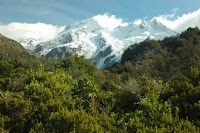 Claudette and I were originally planning to drive down the west coast with the Milford Track being our eventual destination, with a return up the east coast. With crappy weather expected in the west, though, we decided to go down east instead. We started with a short stay in Kaikoura, which is known for its marine life. We saw some seal colonies lounging on the rocks outside of town, then went on a whale-watching trip where I saw my first whale (a sperm whale, huh huh huh).
Claudette and I were originally planning to drive down the west coast with the Milford Track being our eventual destination, with a return up the east coast. With crappy weather expected in the west, though, we decided to go down east instead. We started with a short stay in Kaikoura, which is known for its marine life. We saw some seal colonies lounging on the rocks outside of town, then went on a whale-watching trip where I saw my first whale (a sperm whale, huh huh huh).
